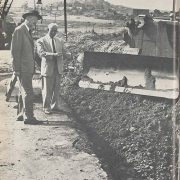Highest Ever Water Temperature Recorded Off San Diego
Water temperature readings off the coast of San Diego on August 9 are believed to be the highest ever measured in California waters.
Two buoys off the coast logged a sea-surface temperature of 81.3 degrees Fahrenheit, surpassing an earlier high temperature set on August 2. The two buoys, the Torrey Pines buoy, located 7.3 miles from the coast, and the Scripps Neashore buoy, located about a mile offshore, are managed by Scripps Institution of Oceanography in California



